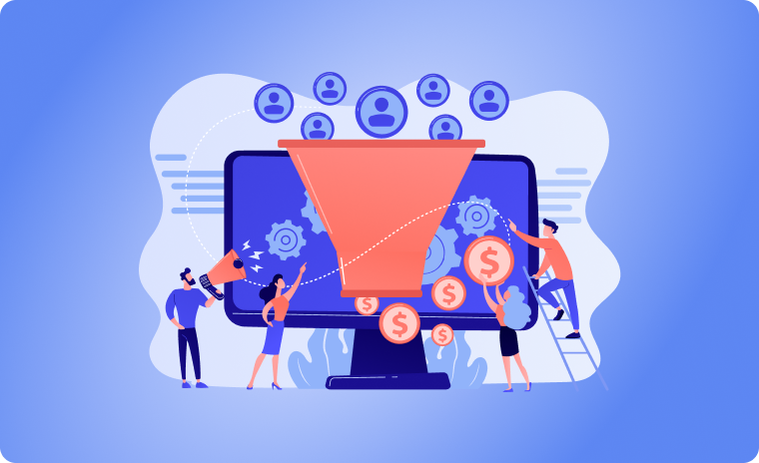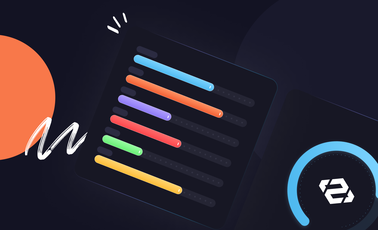Whatever-You-Want-as-a-Service: Subscription Business Model
The "job-to-be-done" approach has been a revelation for the business world. The realization that people want to buy outcomes, not products or services, has transformed the way companies develop their products and market them.
People can get surprisingly creative to attain those outcomes and get the jobs done. As Clayton Christensen points out in his book Competing against Luck, people driving to the nearest McDonald's to grab a milkshake before 9 a.m. were doing that to solve a specific problem: Making their morning commute more interesting while keeping the morning hunger at bay until lunch (Competing against Luck, pp.19-23). Milkshake beat all the other alternatives like coffee, bagels, doughnuts, or a Snickers bar at achieving the desired outcome. Moreover, the same customers could "hire" a milkshake for entirely different jobs in the afternoon. For example, it could be a consolation prize for a kid who couldn't get his mom to buy him a toy truck.
"Power-by-the-hour" a.k.a Product-as-a-Service
Although business strategy gurus like Ulwick and Christensen are credited with coining the expression, it turns out that British industrialists were experimenting with the idea long before. First, the British aero-engine manufacturer Bristol Siddeley and then Rolls-Royce, which acquired Bristol Siddeley in 1966, had realized that airline companies were looking to buy flight time, not airplane engines. Airplane engines were prohibitively expensive. As airline companies had no expertise in engine maintenance, they either ran the engines into the ground or replaced them too early, thus incurring higher costs. Bristol Siddeley developed a subscription-based engine replacement and maintenance program in 1962.
Rolls-Royce inherited this program from Bristol Siddeley and honed. The result was the power-by-the-hour model, which offered the Rolls-Royce customers Engine-as-a-Service. Rolls-Royce would take care of engine maintenance, maximize uptime for its customers, and provide its customers with new engines when needed. The program charged customers a fixed sum per flying hour in return for predictability in flight time and reduced overhead payments. Getting paid for the time engines remained operational, Rolls-Royce was incentivized to focus on R&D to improve the durability of its engines and develop new preventive maintenance measures.
Subscription services today
The effectiveness of the power-by-the-hour model has inspired many recent adaptations. Tire manufacturer Michelin's tire subscription service Effitires provides a case in point. It enables fleet operators such as logistics and transportation companies to outsource their tire management tasks to Michelin, which has been producing tires for more than a century. The scheme improves fleet uptime and renders a major cost item completely predictable for the customers.
What started in the capital-intensive aviation industry has become mainstream today—just think about all the subscription payments on your monthly credit card bill: Netflix, Amazon Prime, or HBO Max for home entertainment; Apple Music or Spotify for streaming music, Dollar Shave Club or Birchbox for regular supply of personal care items, to name a few. The average monthly spend on subscription services rose from $237 in 2018 to $273 in 2021, an increase of $432 per year. This 15 percent increase has given subscription-based businesses a significant boost, helping them grow five to eight times faster than traditional companies.
Software-as-a-Service (SaaS) companies have built their entire business model on subscriptions. This model determines not only how SaaS companies make money but also how they develop their products. By allowing SaaS companies to track usage, the subscription model provides product teams with a constant stream of customer feedback, enabling them to modify, improve and tailor the product to the customers' specific needs. Companies practicing traditional sales methods are not that lucky, though: They usually receive feedback from customers only in case of complete satisfaction or extreme dissatisfaction with the product.
The advantages of the subscription model
The subscription model owes its success to its ability to offer customers and vendors a happy medium. It helps the former enjoy products and services without high upfront costs. Customers also retain flexibility because they can cancel their subscriptions anytime.
The benefits vendors derive from the subscription business model are manifold. First, they get to develop a bond with customers and maximize Customer Lifetime Value (LTV). One of the crucial metrics a SaaS company has to monitor, LTV refers to the total revenue a customer account will generate. The subscription-based business model lowers the barrier for other offerings from the same vendor and opens up new growth opportunities through upselling and cross-selling. This maximizes the LTV by bringing in add-on revenue without incurring any marginal cost to acquire new customers. A happy subscriber is a golden goose for a SaaS company.
Secondly, the bond nurtured between the customer and the vendor introduces predictability into the vendor's future cash flows and secures long-term revenue for the company. This long-term revenue stream makes it easier for decision-makers to plan ahead on issues ranging from investment to hiring.
"Lease, don't buy" perfectly sums up the current zeitgeist. Startups that recognize that people are looking to get things done rather than owning stuff can capitalize on this and take off. By simply selling new products and services to a fraction of the existing subscribers, a company can unlock the magic of recurring revenue and achieve compounding growth. That's how unicorns are made.




 Please
fill out this field
Please
fill out this field









